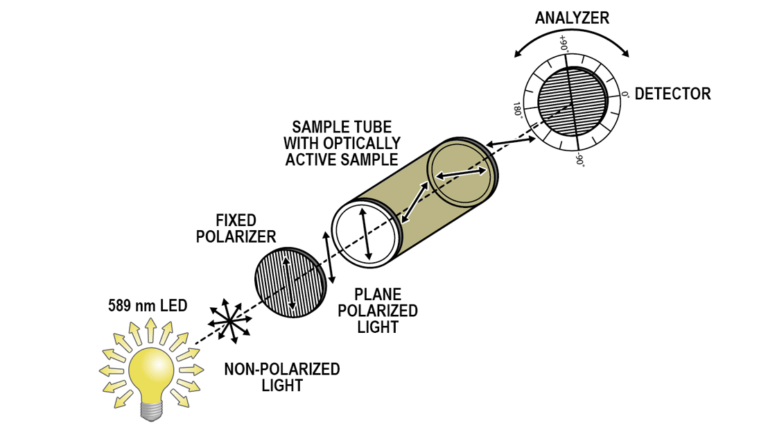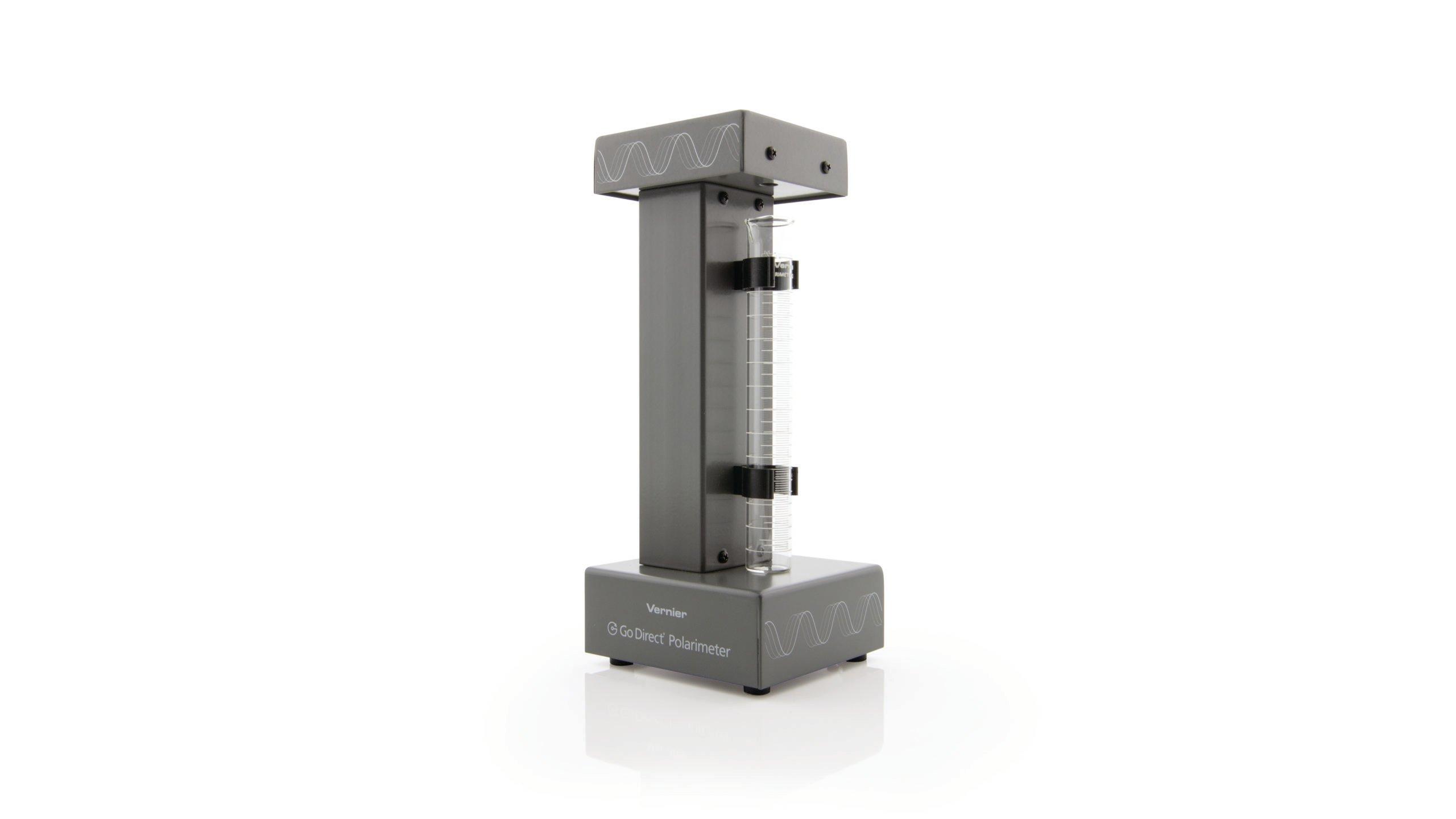
Introduction
A polarimeter is a device that measures the rotation of linearly polarized light by an optically active sample. This is of interest to organic chemists because it enables differentiation between optically active stereoisomers, i.e., enantiomers. Enantiomers, chiral molecules, are molecules which lack an internal plane of symmetry and have a non-superimosable mirror image. One way to tell these molecules apart is to use polarimetry. Polarimetry is also helpful for biological applications because amino acids, nucleic acids, carbohydrates, and lipids are all optically active. Determination of the optical activity of a compound using polarimetry allows the user to determine various characteristics, including the identity, of the specific chemical compound being investigated.
Incident non-polarized light is transmitted through a fixed polarizer that only allows a certain orientation of light into the sample. The sample then rotates the light at a unique angle. As the analyzer is turned, the rotated light is maximally transmitted at that unique angle, allowing the user to determine properties of the sample. A (+) enantiomer rotates the plane of linearly polarized light clockwise, dextro, as seen by the detector. A (–) enantiomer rotates the plane counter-clockwise, levo.
A compound will consistently have the same specific rotation under identical experimental conditions. To determine the specific rotation of the sample, use Biot’s law:
where α is the observed optical rotation in units of degrees, [α] is the specific rotation in units of degrees (the formal unit for specific rotation is degrees dm-1 mL g-1, but scientific literature uses just degrees), ℓ is the length of the cell in units of dm, and c is the sample concentration in units of grams per milliliter.
Objectives
In this experiment, you will
- Become familiar with the use of the Polarimeter.
- Experience how sample path length and concentration affect observed rotation.
- Calculate the specific rotation for a known sugar sample using Biot’s law.
Sensors and Equipment
This experiment features the following sensors and equipment. Additional equipment may be required.
Option 1

Option 2

Ready to Experiment?
Ask an Expert
Get answers to your questions about how to teach this experiment with our support team.
- Call toll-free: 888-837-6437
- Chat with Us
- Email support@vernier.com
Purchase the Lab Book
This experiment is #6 of Organic Chemistry with Vernier. The experiment in the book includes student instructions as well as instructor information for set up, helpful hints, and sample graphs and data.

